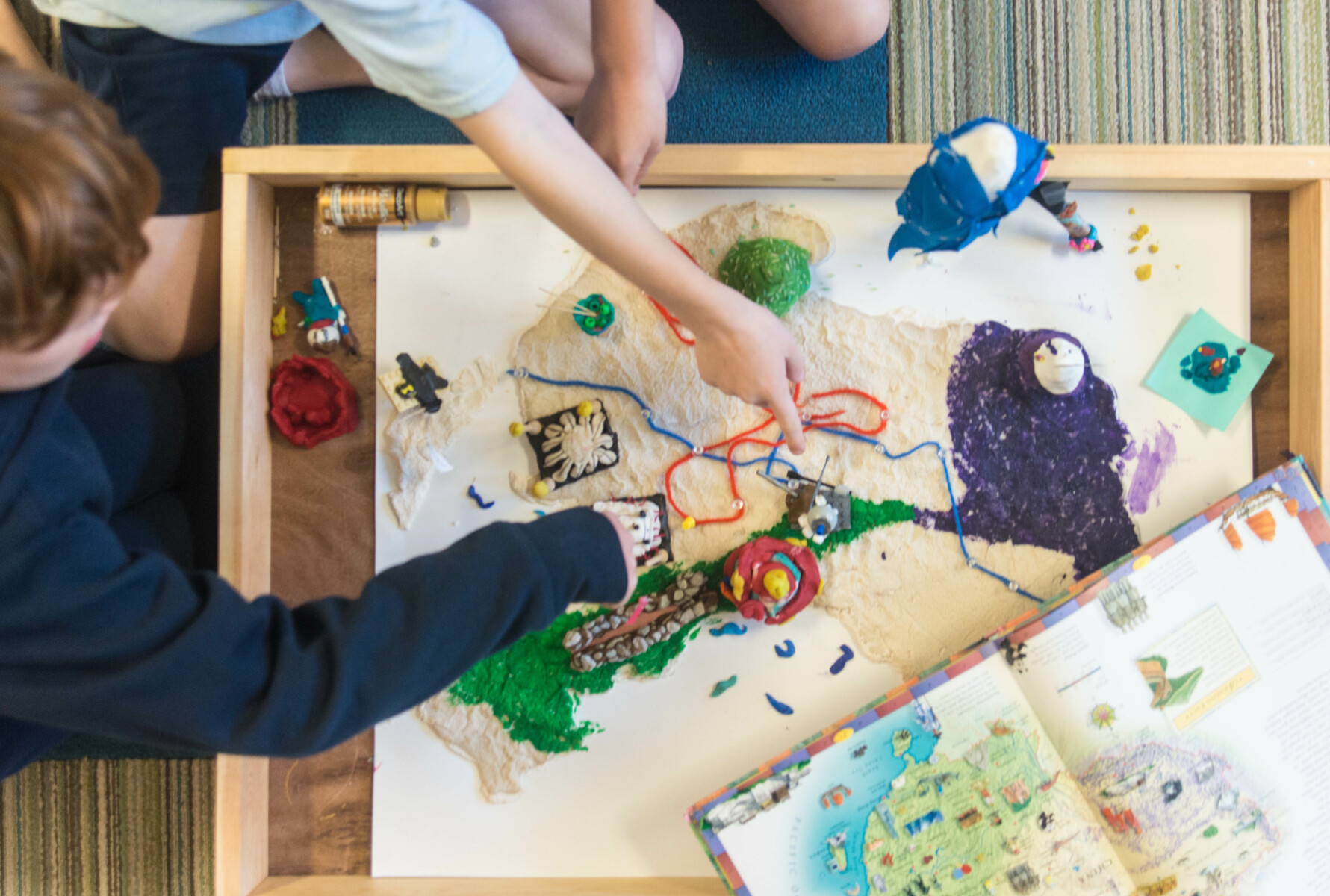Grade 8
In Grade 8, students embrace leadership roles, excel academically, and transition confidently to high school, equipped with the skills and knowledge for success.
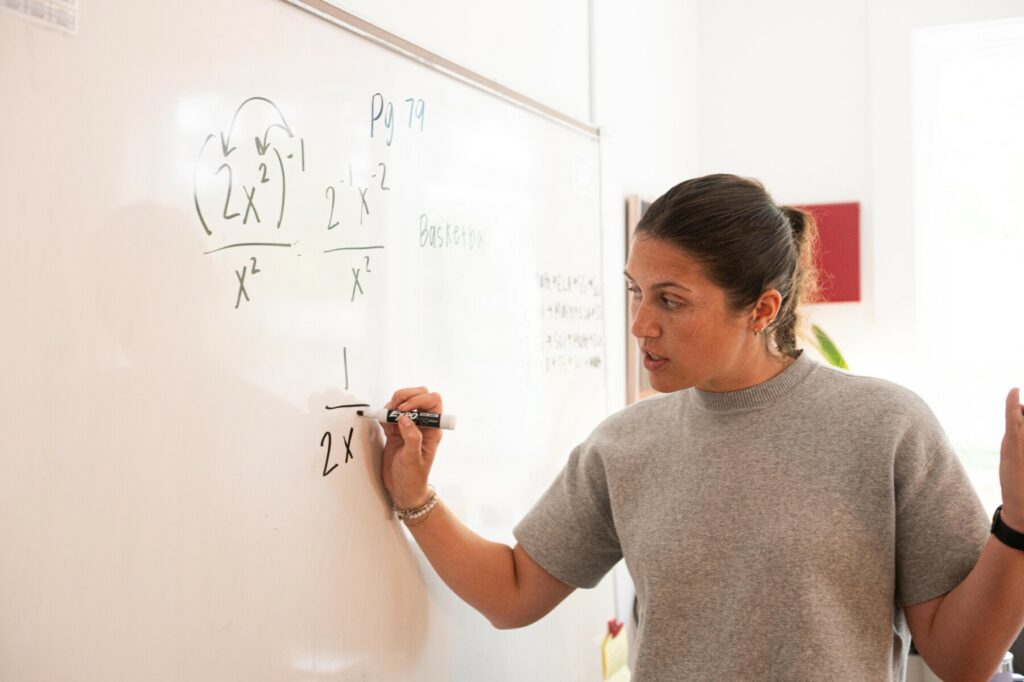
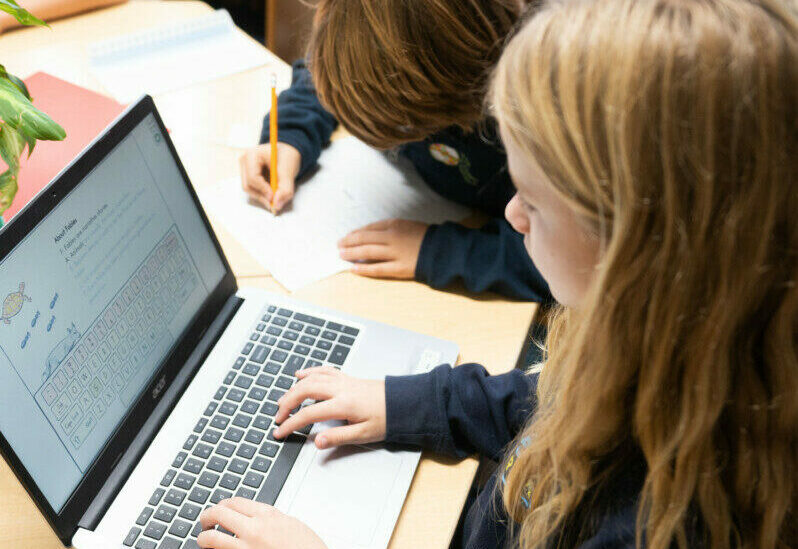
Math
In Grade 8, students can take Algebra 1, a high school credit class that sets the stage for advanced mathematical exploration. The course begins with a focus on one-variable statistics, where students build upon concepts introduced in middle school. Students develop a deep understanding of quantities within real-world contexts through data collection and analysis, fostering collaboration, communication, and critical thinking skills.
As the course progresses, students expand their mathematical repertoire to include linear equations, inequalities, and systems of linear equations and inequalities. They learn to model relationships and constraints, applying abstract reasoning to solve equations and inequalities precisely. Subsequently, students delve into two-variable statistics, utilizing scatter plots and correlation coefficients to interpret quantitative data and distinguish between correlation and causality.
Further exploration leads students to the study of functions, where they deepen their understanding of function notation, domain and range, and graphing techniques. Through real-world contexts and mathematical analysis, students investigate various function types, including linear, exponential, quadratic, and piecewise-defined functions. The course culminates with an in-depth examination of quadratic equations, where students refine their problem-solving skills and deepen their understanding of the real number system through rational and irrational solutions. Through rigorous inquiry and exploration, students emerge from Grade 8 Algebra 1 with a comprehensive understanding of fundamental mathematical concepts and their applications.
English Language Arts
Throughout their Grade 8 year, students embark on a literary exploration tailored to their interests and abilities. They immerse themselves in Dystopian Book Clubs, dissecting complexity, symbolism, and allusions within chosen texts. Transitioning to nonfiction students sharpen their ability to identify and trace implicit arguments, honing their skills in dissecting and interpreting complex texts. Using classic texts such as To Kill a Mockingbird and The Outsiders, students deepen their comprehension and annotation skills, empowering them as democratic readers who engage in literature with diverse perspectives and enduring themes.
In their journey through Grade 8 Writing, students embark on a dynamic exploration of journalistic inquiry and literary analysis. They begin with Journalism, harnessing keen observations of life to craft investigative articles on pertinent topics, cultivating their skills in research and reporting. Transitioning to writing literary essays, students delve into the nuances of literary analysis, crafting arguments and counterarguments on themes found in texts, supported by meticulous analysis of plot, character, and authorial techniques. Students also explore the timeless works of Shakespeare, delving into the complexities of sonnets and other literary masterpieces, deepening their understanding of language, symbolism, and thematic depth while crafting their sonnets to express their creativity and mastery of poetic form. Students conclude the year writing position papers and master the art of composing principled arguments, drawing upon evidence, contextualizing their positions, and addressing diverse perspectives with clarity and conviction. Through these units, students emerge as proficient writers with the tools to navigate complex topics and engage in informed discourse.
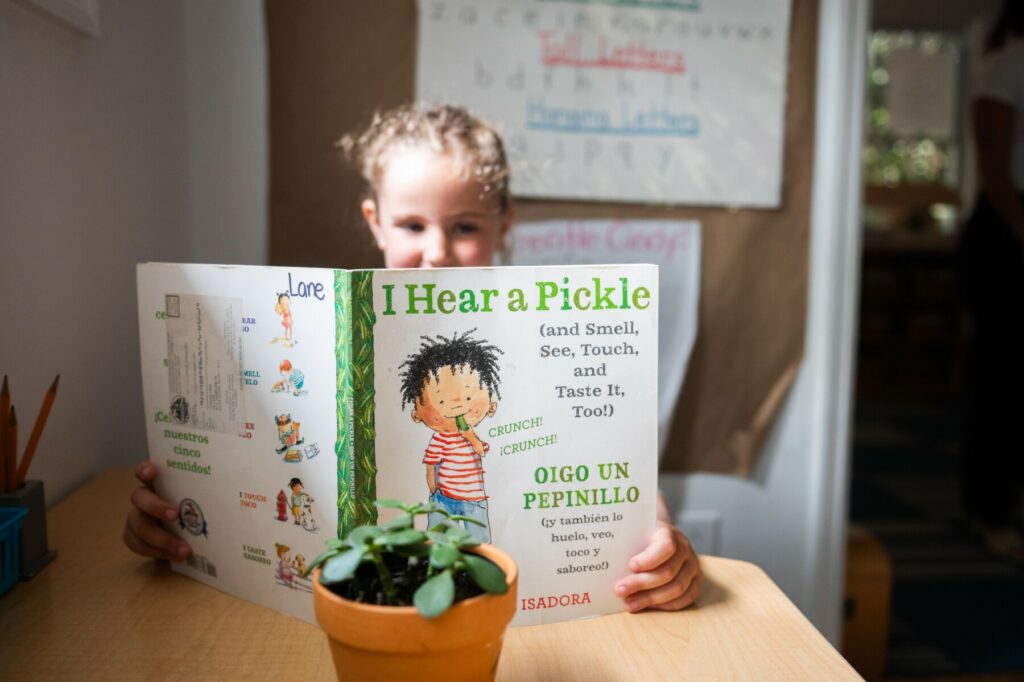
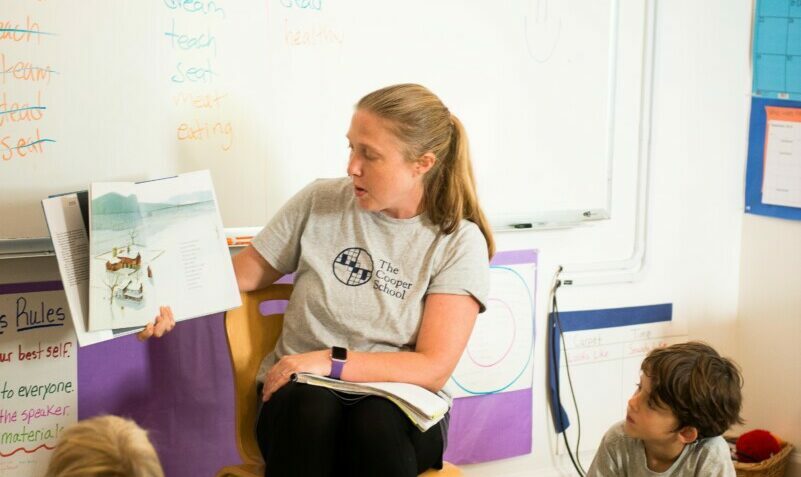
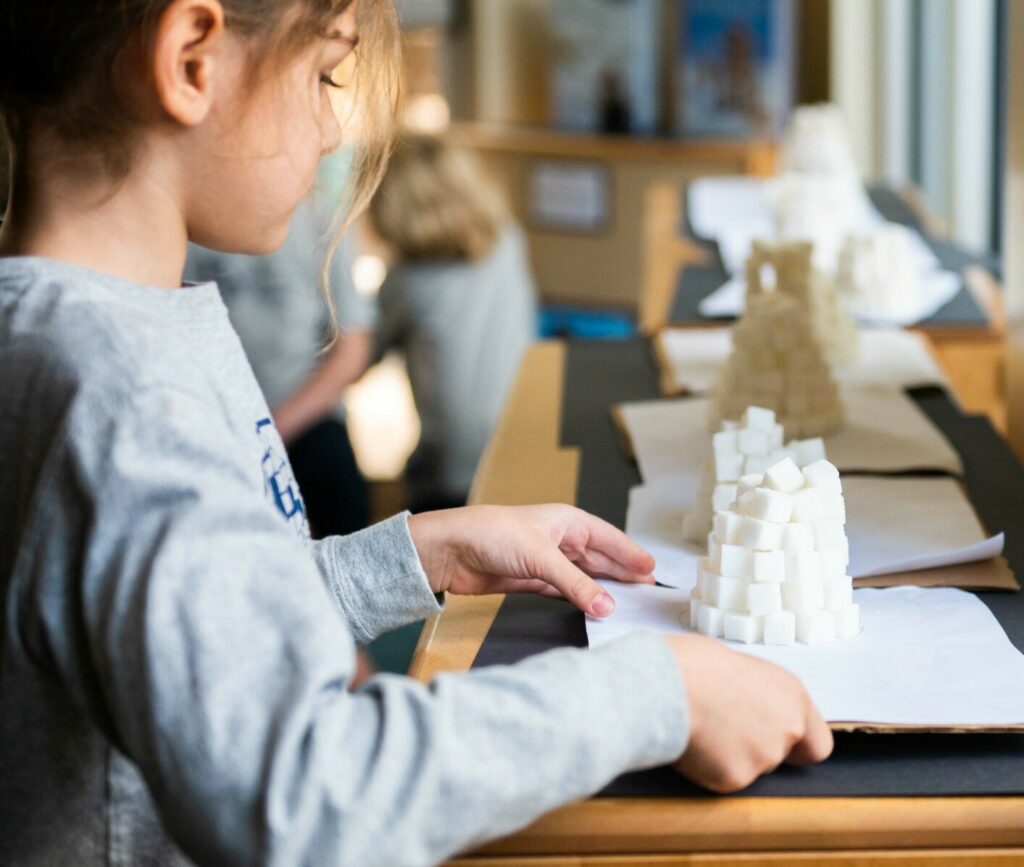
Science
In Grade 8 Science, students explore fundamental scientific principles, with a particular focus on gravity and kinetic energy. At the beginning of the year, students delve into the mechanics of gravity, gaining insights into its effects on objects and its role in shaping the behavior of celestial bodies. Additionally, students engage with kinetic energy, exploring its various forms and applications in real-world scenarios. They are challenged to apply their understanding of kinetic energy as they design and construct Rube Goldberg machines, fostering creativity and problem-solving skills.
Mid-year, students delve into the intricacies of biological sciences, beginning with investigations into natural selection and its role in driving evolutionary change. Through hands-on activities and simulations, students explore the mechanisms of natural selection and understand how environmental factors shape the characteristics of living organisms. They then transition to the study of heredity and adaptation, delving into the processes of genetic inheritance and the mechanisms by which organisms adapt to their environments, gaining a comprehensive understanding of the principles underlying biological diversity and adaptation. Throughout these explorations, students engage in variables, science projects, and self-assessments, honing their scientific inquiry skills and fostering a deeper appreciation for the wonders of the natural world.
Social Studies
Using a high school curriculum in Grade 8 Social Studies, students explore American history comprehensively, tracing the nation’s trajectory from the Industrialization era and beyond. They delve into the transformative events and societal shifts that shaped the country during this dynamic period, from the rise of industrial capitalism to the emergence of urbanization and immigration. Students examine the profound economic, social, and political changes that occurred, including the influence of key figures and the rise of labor unions and social reform movements aimed at addressing the challenges of Industrialization.
As students progress through the curriculum, they encounter pivotal moments in American history, including the turbulent years of World War I and World War II. They analyze the causes and consequences of these global conflicts, exploring the United States’ role in shaping the outcomes and the impact of war on both domestic society and international relations. Furthermore, students delve into the complexities of the Great Depression, examining its root causes, governmental and societal responses, and the enduring legacies that have continued to shape American economic policies and social welfare programs. Additionally, students explore the struggles and triumphs of marginalized groups, such as women and minorities, as they fight for equal rights and representation in society. Students investigate the quest for racial unity and civil rights, examining critical events like the Civil Rights Movement and the ongoing struggle for racial justice and equality in America. Through critical analysis and inquiry-based learning, students develop a deeper understanding of the intricate dynamics of American society and the persistent pursuit of social justice and equality throughout history.
